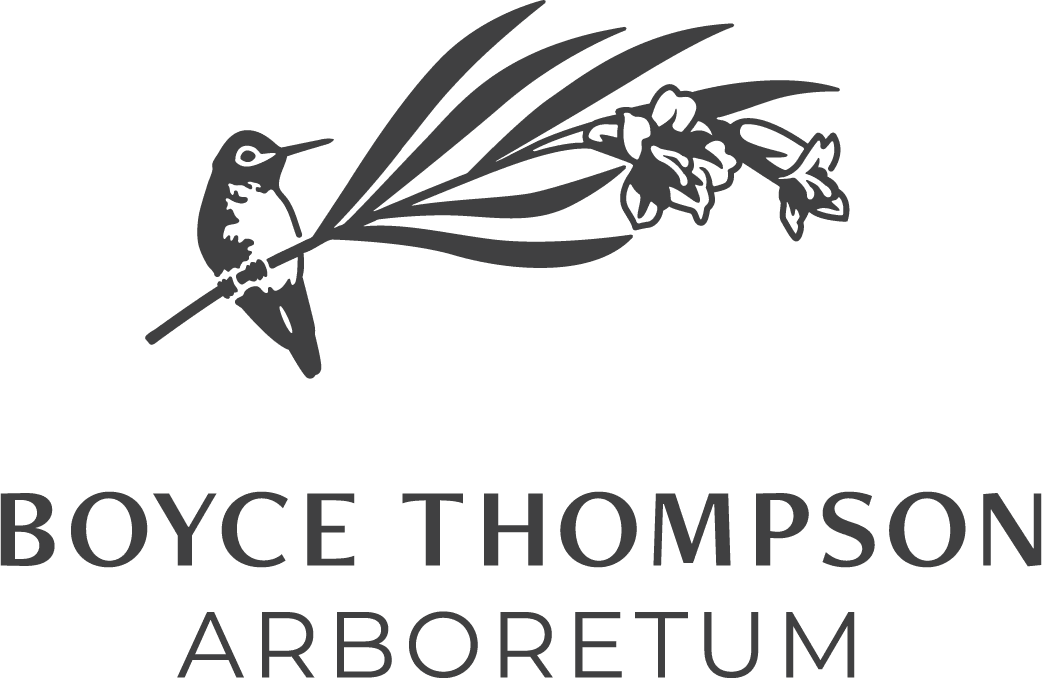Boyce Thompson Arboretum holds collections of desert plants from around the world.
The collections include plants from the United States, Mexico, Australia, Madagascar, India, China, Japan, Israel, South America, the Middle East, Africa, the Mediterranean, and the Arabian Peninsula—all told 3,900 taxa and 19,000 plants within 135 acres of gardens. We highlight twelve of our gardens and exhibits below. To learn more about the Wallace Desert Garden, please click here.
Click to view each garden
Australian Deserts Exhibit
The Australian Exhibit, the largest at BTA, stretches over approximately 10 acres of sprawling woodland and encompasses 1,280 plantings, many of which date from the mid-1920s. The exhibit includes the largest and most diverse stand of eucalyptus trees in North America. Our eucalyptus collection holds 93 taxa and was nationally accredited in 2018.
Cactus & Succulents Garden
Just below the majestic Magma Ridge lies the Cactus and Succulents Garden, a collection of common, rare and endangered succulents from deserts throughout North and South America. The exhibit includes numerous hedgehog, prickly pear, and columnar cacti, which sport gorgeous blooms in spring and summer.
Taylor Family Desert Legume Garden
In collaboration with the Desert Legume Program at The University of Arizona, the Taylor Family Desert Legume Garden serves to illustrate the diversity and usefulness of legumes from deserts around the world. In fact, many common trees of the Sonoran desert are legumes, like the mesquite, palo verde, and ironwood.
Chihuahuan Desert Exhibit
The largest desert in North America is well represented in this collection of agaves, yuccas, mescal bean trees, and ever-bearing prickly pear cacti, a favorite of javelina. Predominantly a shrub desert, the Chihuahuan Desert differs from the Sonoran Desert in that it has much colder winters and wetter monsoons.
The Chihuahuan Desert is considered the most diverse desert in the Western Hemisphere and one of the most diverse arid regions in the world. Unfortunately, because of human activities and the overcollection of native plants and animals, it is also one of the most endangered regions in the world.
Children’s Garden
With three sensory gardens, a human sundial, and a maze, the Children’s Garden offers children and the young at heart a unique environment filled with hidden treasures.
At the heart of the Children’s Garden is the Gloria Wing-Ong Children’s Learning Center.
This ‘outdoor classroom with a view’ is named in honor of Gloria Wing-Ong, a teacher who inspired her students to discover the joy of learning. Today her legacy continues with educational programs offered year-round for children and adults.
Demonstration Garden
The Demonstration Garden features a number of beautifully landscaped and water-efficient small gardens. Built to illustrate how native and drought-tolerant plants can create lovely gardens in residential and commercial settings, the gardens showcase decorative hardscape, sitting areas and water features. A favorite of visitors!
Heritage Rose Garden
This garden, adjacent to the 1920s-era Smith Building, features heirloom or antique roses, varieties dominant during the 19th and early 20th centuries. These particular roses, by design, use less water and fertilizer, require little pruning, and are less likely to be threatened by fungus in comparison to their hybrid cousins.
Rodica Heinz Pollinator Garden
The Pollinator Garden displays a variety of seasonal plants that attract and nurture the pollinators so important to the health of our ecosystems—butterflies, bees and birds. Species include flowering trees and shrubs, and native perennials like coreopsis and blanket flower.
Sonoran Desert Exhibit & Curandero Trail
Distinguishing the Sonoran Desert, home to Boyce Thompson Arboretum, are its columnar cacti, like the saguaro, and its mild winters. It is lush in comparison to most other deserts and supports a rich spectrum of some 2,000 species of plants. This exhibit features plants native to the Sonoran Desert such as the creosote, jojoba, ocotillo, sotol, and of course, saguaro and other forms of cacti. The Curandero Trail highlights a wide array of wild medicinal plants found in the Sonoran Desert. The trail is named for traditional healers in Mesoamerican culture.
South American Deserts Exhibit
The South American Exhibit highlights plant communities within the Gran Chaco and the Monte Desert that are located approximately the same distance south of the equator as the Sonoran Desert is north of the equator. Though a hemisphere away from each other, these deserts share similar looking species of columnar cacti and other plants. The entrance features a “quincho,” a South American thatched hut, for shade.
Wallace Rose Garden
Originally part of the Wallace Desert Gardens, this collection comprises well over 100 ornamental hybrid tea and floribunda roses. Mrs. H.B. Wallace was very fond of roses and the extensive varieties available; H.B. Wallace amassed this large collection for her. The collection is located at the entrance to the Wallace Desert Garden.
Wing Memorial Herb Garden
The Wing Memorial Herb Garden contains many low-water use native and southern European herbs that thrive in the Sonoran Desert, such as thyme, oregano, dill, rosemary, lamb’s ear, comfrey and chamomile, along with many other herbs used in the culinary arts, medicinal healing, cosmetics and insect repellants.
#1Arb
Tag us on Instagram with
@btarboretum #1Arb
Celebrate Arbor Day at Boyce Thompson Arboretum!
Join us for our second annual Arbor Day Celebration and immerse yourself in the wonderful world of trees! This event is perfect for the whole family, with exciting tree-themed activities and crafts. Plus, Girl Scouts can earn a special patch for attending (while supplies last, pre-registration required 7830.blackbaudhosting.com/7830/Girl-Scouts-Arbor-Day-2025). Event entry is free with paid admission.
Date: April 26th
Time: 10:00 am - 1:00 pm
Location: Boyce Thompson Arboretum, 37615 E Arboretum Way, Superior, AZ 85173
Highlights:
Liberty Wildlife: Meet ambassador birds up close!
Department of Fire and Forestry Management: Learn about tree care and fire safety.
Ice, Ice Baby: Enjoy delicious snow cones and fresh-pressed lemonade.
Tree-themed Activities and Games: Fun for all ages!
Activities:
Tree or Not Tree
Tree Slice Necklaces
Leaf Shape Viewer
Tree Scavenger Hunts
Thank a Tree
Dendrochronology
Tissue Paper Trees
